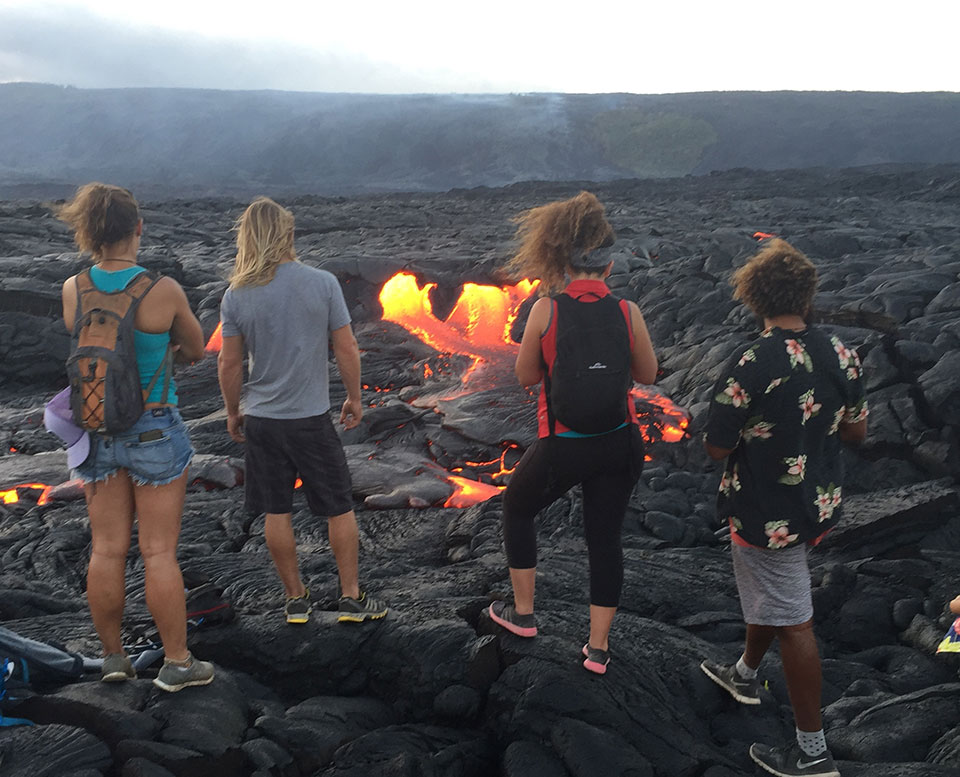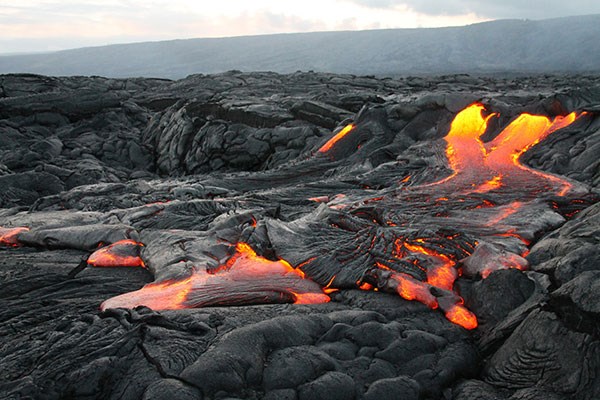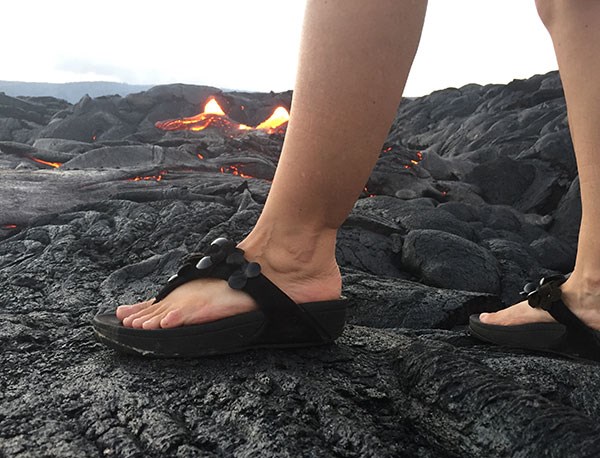|
You are viewing ARCHIVED content published online before January 20, 2025.
Please note that this content is NOT UPDATED, and links may not work. For current information,
visit https://www.nps.gov/aboutus/news/index.htm.

NPS Photo
Contact: Jessica Ferracane/Public Affairs Specialist, 808-985-6018 Hawaii National Park, Hawai‘i - Visitors may hike and bicycle along the gravel emergency access route at the end of Chain of Craters Road to view and access lava as it flows down the Pūlama Pali and spreads out onto the coastal lava plain in the national park, and towards the ocean.
NPS Photo/L. Konrad From Hawai'i Volcanoes National Park, the easiest vantage point to view this current eruptive activity is from a distance at the end of Chain of Craters Road. Visitors are encouraged to stop at the Coastal Ranger Station (CRS) to talk with park rangers, view eruption and hiking tip exhibits, and watch a four-minute lava safety video. A public spotting scope is available to view the eruptive activity from a distance, as staffing allows. The park is open 24 hours a day. Hiking to the lava from the park is allowed, but it's not for everyone. From the CRS, it's a long, hot, and grueling 10-to 12-mile roundtrip hike. Hikers can walk along the gravel emergency access route for about 3.8 miles, and then turn inland at a light beacon which marks the closest point to the active flow front, currently about a ½ mile from the route. The flow field is a rough hike, with deep earth cracks, uneven terrain, and razor-sharp lava from older flows. Rangers placed another light beacon 4.8 miles down the emergency access route, about 50 yards inland from the road, as a suggested starting point for hikers from the Kalapana side. The county Kalapana Lava Viewing Area near the park's eastern boundary also offers a vantage point of the current eruption, and is open daily from 3 p.m. to 9 p.m. 
NPS Photo Hikers are urged to be prepared, and to head out in daylight. There is no trail or marked route to the lava, which continues to flow and change daily. It is easy to become disoriented after dark. Each person needs about a gallon of water, sturdy closed-toe hiking shoes or boots, gloves to protect the hands, and long pants to protect against lava rock abrasions. Wear sunblock, sunglasses and a hat. Each person needs a flashlight and/or headlight with extra batteries. "If you're planning an excursion to the lava flows, go during daylight hours," advised Park Superintendent Cindy Orlando, who hiked out across the lava plain earlier this week. "It's still a long, tough hike, but the viewing has been excellent by day," she said. Experienced bicyclists can also use the emergency access route, but the loose gravel makes it a challenging ride for inexperienced riders. Cyclists are urged to ride during daylight hours only. Motorized vehicles are prohibited. Orlando also reminds hikers to respect Hawaiian culture. Many native Hawaiians believe that lava is the kinolau, or physical embodiment, of volcano goddess Pele. Poking lava with sticks and other objects is disrespectful. It's also illegal in national parks. Federal law prohibits "possessing, destroying, injuring, defacing, removing, digging or disturbing" natural and cultural resources (36 CFR § 2.1). Pets and unmanned aerial systems, or drones, are also prohibited on the flow field in the National park. Volcanic gas is another hazard, particularly to people with heart or respiratory problems, and infants, young children and pregnant women. If air irritates smells bad or makes breathing difficult, visitors should leave the area. Volcanoes are dynamic and ever-changing natural phenomena. The information provided can change at any time. For hiking tips, visit the park website -NPS- 
NPS Photo/L. Konrad |
Last updated: July 25, 2017
